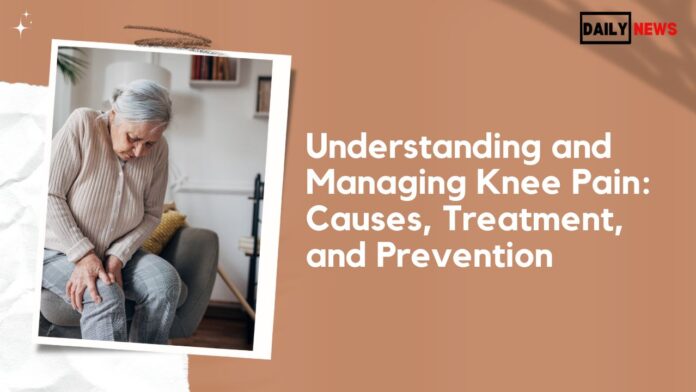Knee pain is one of the most common musculoskeletal issues affecting people of all ages. Whether caused by injury, overuse, or underlying medical conditions, it can significantly impact daily life. This comprehensive guide explores the causes, treatments, and prevention strategies for knee pain, providing actionable insights for better joint health.
Understanding Knee Pain: The Basics
The knee joint is a complex structure comprising bones, cartilage, ligaments, and tendons. It bears the body’s weight and facilitates movement, making it vulnerable to wear and tear or injury. Knee pain may vary in intensity and location, depending on the underlying cause.
Common Symptoms of Knee Pain
- Swelling and stiffness
- Redness and warmth around the joint
- Weakness or instability
- Popping or crunching noises
- Inability to fully straighten the knee
Causes of Knee Pain
Knee pain can arise from various factors, including acute injuries, chronic conditions, and lifestyle choices. Understanding these causes is crucial for effective treatment.
1. Acute Injuries
- Ligament Injuries: Tears in the anterior cruciate ligament (ACL) or medial collateral ligament (MCL) are common in athletes.
- Meniscus Tears: Twisting motions can cause tears in the cartilage cushioning the knee.
- Fractures: Trauma or falls can result in broken bones in the knee area.
- Dislocations: Sudden impacts may dislocate the kneecap.
2. Chronic Conditions
- Osteoarthritis: Wear and tear on the cartilage leads to pain, stiffness, and swelling.
- Rheumatoid Arthritis: An autoimmune disease causing inflammation in the joints.
- Tendinitis: Overuse of tendons can lead to inflammation, especially in runners or cyclists.
- Bursitis: Repeated pressure or trauma causes inflammation in the fluid-filled sacs (bursae) around the knee.
3. Lifestyle and Other Factors
- Obesity: Excess weight places additional stress on the knee joints.
- Sedentary Lifestyle: Lack of activity weakens muscles supporting the knees.
- Improper Footwear: Wearing unsupportive shoes can lead to joint misalignment.
Treatment Options for Knee Pain
Effective management of knee pain depends on the underlying cause. Treatment can range from self-care remedies to medical interventions.
1. Home Remedies
- Rest and Ice: Resting the knee and applying ice packs can reduce swelling and pain.
- Compression and Elevation: Using a compression bandage and keeping the leg elevated helps control swelling.
- Over-the-Counter Medications: Nonsteroidal anti-inflammatory drugs (NSAIDs) like ibuprofen can relieve pain and inflammation.
2. Physical Therapy
- Strengthening exercises for the quadriceps and hamstrings improve joint stability.
- Stretching routines enhance flexibility and prevent stiffness.
- Low-impact activities like swimming or cycling help maintain mobility without straining the knees.
3. Medical Treatments
- Corticosteroid Injections: Reduce inflammation in cases of severe arthritis or bursitis.
- Hyaluronic Acid Injections: Lubricate the knee joint for improved movement and reduced pain.
- Surgical Interventions:
- Arthroscopy: Minimally invasive surgery to repair ligament or cartilage damage.
- Partial or Total Knee Replacement: Recommended for advanced arthritis when other treatments fail.
Preventing Knee Pain
Adopting proactive measures can significantly reduce the risk of knee pain and enhance joint health.
1. Maintain a Healthy Weight
Excess weight strains the knees, accelerating wear and tear. A balanced diet and regular exercise help in maintaining a healthy BMI.
2. Exercise Regularly
Incorporate both strength training and aerobic activities. Focus on low-impact exercises to avoid excessive strain on the joints.
3. Wear Proper Footwear
Choose shoes with good arch support and cushioning to minimize joint misalignment.
4. Use Correct Posture
Pay attention to posture during activities like sitting, walking, or exercising. Avoid sudden, jerky movements that can stress the knees.
5. Warm-Up and Stretch
Before engaging in physical activity, ensure a proper warm-up and stretching routine to prepare the muscles and ligaments.
6. Listen to Your Body
Avoid pushing through pain during exercise or daily activities. Early intervention can prevent minor issues from escalating.
When to See a Doctor
Seek medical attention if:
- Pain persists for more than a few weeks despite self-care.
- Swelling or redness worsens.
- The knee feels unstable or gives way during movement.
- There is a visible deformity following an injury.
Conclusion
Knee pain is a widespread issue, but it is manageable with the right approach. By understanding its causes, exploring effective treatment options, and adopting preventive measures, you can maintain healthy knees and an active lifestyle. Early diagnosis and consistent care are key to long-term relief.

Er. Rishav Raj (Btech Computer Science)
Dr. Rishav Raj (Bachelor of Ayurvedic medicine and Surgery)
I am a professional blogger since 12 years worked for different healthcare blog as well as health care advisor for different multinational companies as well as Software developer for different healthcare and technology based software.i am here to share you some informative blog regarding news , healthcare and technology







